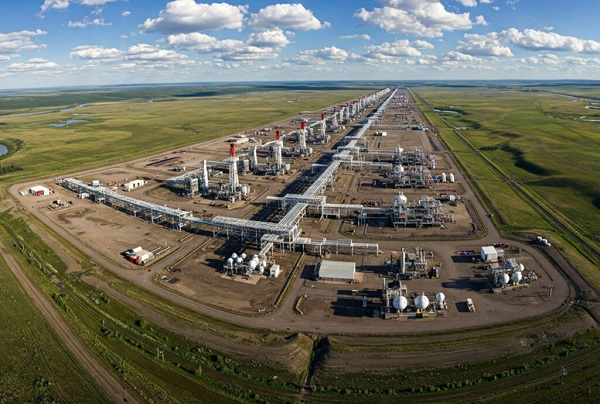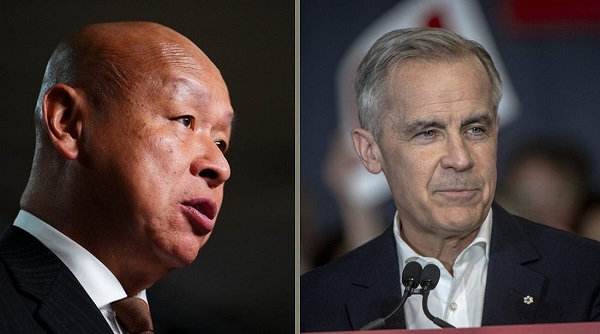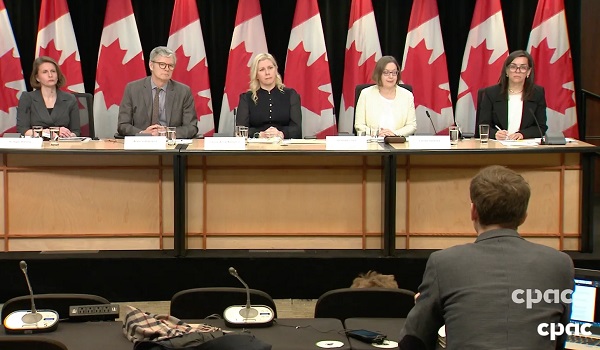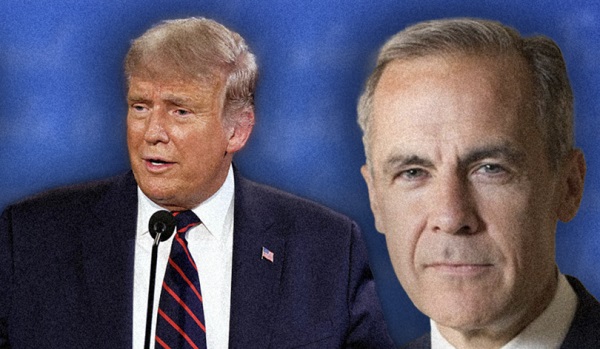Economy
NDP slated to back Conservative motion calling for nationwide pause on home heating carbon tax

From LifeSiteNews
‘The reality is we have people who are struggling to make ends meet— to heat their homes during the winter,’ NDP House leader Peter Julian told reporters Thursday, indicating the party’s support for the Conservatives’ motion.
In a rare turn of events, the New Democratic Party (NDP) is slated to vote in favor of a Conservative Party of Canada (CPC motion calling for a nationwide pause on the carbon tax applied to home heating fuel.
While the motion is non-binding, should the NDP vote in favor of the motion, it could force the federal government under Liberal Prime Minister Justin Trudeau to pause the tax for all Canadians, and could even open up the possibility of a future vote of non-confidence.
CPC MPs served a notice in the House of Commons that they will put to a vote, as early as this coming Monday, their motion which reads: “That given the government has announced a ‘temporary three-year pause’ to the federal carbon tax on home heating oil, the House call on the government to extend that pause to all forms of home heating.”
The motion was brought forth by CPC leader Pierre Poilievre on Tuesday of this week.
Trudeau announced last week he was pausing the collection of the carbon tax on home heating oil for three years, but only for Atlantic Canadian provinces. The current cost of the carbon tax on home heating fuel is 17 cents per liter. Most Canadians however heat their homes with clean-burning natural gas, a fuel which will not be exempted from the carbon tax.
Trudeau’s carbon tax pause for Atlantic Canada announcement came amid dismal polling numbers showing his government is likely to be defeated in a landslide by the Conservative Party come the next election.
Earlier this week, Poilievre dared Trudeau to call a “carbon tax” election so Canadians can decide for themselves if they want a government for or against a tax that has caused home heating bills to double in some provinces.
Trudeau claimed the Conservatives “still want to fight another election on denying climate change,” and that they are “wrong” as Canadians would vote Liberal again.
After he suggested Canadians would vote Liberal again, despite polls suggesting the party would lose badly if an election were called today, Poilievre hand gestured Trudeau to “bring it [an election].”
Trudeau has thus far rejected calls for giving carbon tax exemptions to other provinces.
NDP appears to support Conservative motion
The CPC’s motion appears to have the support of the NDP, an interesting development considering the deal they have with the Liberal Party. The Liberal Party has a minority government and formed an informal coalition with the NDP last year, with the latter agreeing to support and keep the former in power until the next election is mandated by law in 2025.
Yesterday, NDP House Leader Peter Julian told reporters, “The reality is we have people who are struggling to make ends meet— to heat their homes during the winter.”
“The panicked action of last week really needs to be adjusted so there are supports that go to people right across the country,” he said.
Julian added that Trudeau’s backtracking of the carbon tax for one region of the country is not fair for the rest of Canadians.
“It tends to disadvantage a lot of people,” he said.
Should the NDP vote in favor of the CPC motion, it should pass the House of Commons. It is unclear whether the Bloc Québecois are in favor of the motion.
Trudeau’s latest offering of a three-year pause on the carbon tax in Atlantic Canada has caused a major rift with oil and gas-rich western provinces, notably Alberta and Saskatchewan, and even Manitoba which has a new NDP government.
Saskatchewan Premier Scott Moe on Monday said his province will stop collecting a federal carbon tax on natural gas used to heat homes come January 1, 2024, unless it gets a similar tax break as the Atlantic Canadian provinces.
Alberta Premier Danielle Smith has said she will be looking into whether a Supreme Court challenge on the carbon tax is in order. She noted however that as Alberta has a deregulated energy industry, unlike Saskatchewan, she is not in a position to stop collecting the federal carbon tax.
LifeSiteNews reported earlier this month how Trudeau’s carbon tax is costing Canadians hundreds of dollars annually, as the rebates given out by the federal government are not enough to compensate for the increased fuel costs.
The Trudeau government’s current environmental goals – in lockstep with the United Nations’ “2030 Agenda for Sustainable Development” – include phasing out coal-fired power plants, reducing fertilizer usage, and curbing natural gas use over the coming decades.
The reduction and eventual elimination of the use of so-called “fossil fuels” and a transition to unreliable “green” energy has also been pushed by the World Economic Forum (WEF) – the globalist group behind the socialist “Great Reset” agenda – an organization in which Trudeau and some of his cabinet are involved.
Send an urgent message to Canadian legislators urging them to stop more online censorship laws
2025 Federal Election
Fixing Canada’s immigration system should be next government’s top priority

From the Fraser Institute
Whichever party forms government after the April 28 election must put Canada’s broken immigration system at the top of the to-do list.
This country has one of the world’s lowest fertility rates. Were it not for immigration, our population would soon start to decline, just as it’s declining in dozens of other low-fertility countries around the world.
To avoid the social and economic tensions of an aging and declining population, the federal government should re-establish an immigration system that combines a high intake with strictly enforced regulations. Once Canadians see that program in place and working, public support for immigration should return.
Canada’s total fertility rate (the number of children, on average, a woman will have in her lifetime) has been declining, with the odd blip here and there, since the 1960s. In 1972, it fell below the replacement rate of 2.1.
According to Statistics Canada, the country’s fertility rate fell to a record low of 1.26 in 2023. That puts us in the company of other lowest-low fertility countries such as Italy (1.21), Japan (1.26) and South Korea (0.82).
Those three countries are all losing population. But Canada’s population continues to grow, with immigrants replacing the babies who aren’t born. The problem is that, in the years that followed the COVID-19 lockdowns, the population grew too much.
The Liberal government was unhappy that the pandemic had forced Canada to restrict immigration and concerned about post-pandemic labour shortages. To compensate, Ottawa set a target of 500,000 new permanent residents for 2025, double the already-high intake of about 250,000 a year that had served as a benchmark for the Conservative government of Stephen Harper and the Liberal governments of Paul Martin and Jean Chrétien.
Ottawa also loosened restrictions on temporary foreign worker permits and the admission of foreign students to colleges and universities. Both populations quickly exploded.
Employers preferred hiring workers from overseas rather than paying higher wages for native-born workers. Community colleges swelled their ranks with international students who were also issued work permits. Private colleges—Immigration Minister Marc Miller called them “puppy mills”—sprang up that offered no real education at all.
At the same time, the number of asylum claimants in Canada skyrocketed due to troubles overseas and relaxed entry procedures, reaching a total of 457,285 in 2024.
On January 1 of this year, Statistics Canada estimated that there were more than three million temporary residents in the country, pushing Canada’s population up above 41.5 million.
Their presence worsened housing shortages, suppressed wages and increased unemployment among younger workers. The public became alarmed at the huge influx of foreign residents.
For the first time in a quarter century, according to an Environics poll, a majority of Canadians believed there were too many immigrants coming into Canada.
Some may argue that the solution to Canada’s demographic challenges lie in adopting family-friendly policies that encourage couples to have children. But while governments improve parental supports and filter policies through a family-friendly lens—for example, houses with backyards are more family-friendly than high-rise towers—no government has been able to reverse declining fertility back up to the replacement rate of 2.1.
The steps to repairing Canada’s immigration mess lie in returning to first principles.
According to Statistics Canada, there were about 300,000 international students at postsecondary institutions when the Liberals came to power in 2015. Let’s return to those levels.
The temporary foreign worker program should be toughened up. The government recently implemented stricter Labour Market Impact Assessments, but even stricter rules may be needed to ensure that foreign workers are only brought in when local labour markets cannot meet employer needs, while paying workers a living wage.
New legislation should ensure that only asylum claimants who can demonstrate they are at risk of persecution or other harm in their home country are given refuge in Canada, and that the process for assessing claims is fair, swift and final. If necessary, the government should consider employing the Constitution’s notwithstanding clause to protect such legislation from court challenges.
Finally, the government should admit fewer permanent residents under the family reunification stream and more from the economic stream. And the total admitted should be kept to around 1 per cent of the total population. That would still permit an extremely robust intake of about 450,000 new Canadians each year.
Restoring public confidence in Canada’s immigration system will take much longer than it took to undermine that confidence. But there can be no higher priority for the federal government. The country’s demographic future is at stake.
Economy
Clearing the Path: Why Canada Needs Energy Corridors to Compete

From Energy Now
Originally published by Canada Powered by Women
-
Keystone XL ($8 billion), cancelled in 2021
-
Energy East ($15.7 billion), cancelled in 2017
-
Northern Gateway ($7.9 billion), cancelled in 2016
These projects were cancelled due to regulatory challenges, environmental opposition, and shifting political decisions on both sides of the border. This left Canada without key infrastructure to support energy exports.
For years, companies have tried to build the infrastructure needed to move Canadian oil and gas across the country and to sell to global markets. Billions of dollars have been invested in projects that never materialized, stuck in regulatory limbo, weighed down by delays, or cancelled altogether.
The urgency of this issue is growing.
Last week, 14 CEOs from Canada’s largest pipeline and energy companies issued an open letter urging federal leaders from all parties to streamline regulations and establish energy corridors, warning that delays and policy uncertainty are driving away investment and weakening Canada’s position in global energy markets.
The U.S. recently imposed tariffs on Canadian energy, adding new pressure to an already lopsided trade relationship. According to the 2024-2025 Energy Fact Book from Natural Resources Canada, the U.S. accounted for 89% of Canada’s energy exports by value, totalling $177.3 billion. This leaves the economy vulnerable to shifts in American policy. Expanding access to other buyers, such as Japan, Germany, and Greece, would help stabilize and grow the economy, support jobs, and reduce reliance on a single trading partner.
At the heart of this challenge is infrastructure.
Without reliable, efficient ways to move energy, Canada’s ability to compete is limited. Our existing pipelines run north-south, primarily serving the U.S., but we lack the east-west capacity needed to supply our own country and to diversify exports. Energy corridors (pre-approved routes for major projects) would ensure critical infrastructure is built fast, helping Canada generate revenue from its own resources while lowering costs and attracting investment.
This matters for affordability and reliability.
Our research shows engaged women are paying close attention to how energy policies affect their daily lives — 85 per cent say energy costs impact their standard of living, and 77 per cent support the development and export of liquefied natural gas (LNG) to help provide energy security and to generate revenue for Canada.
With increasing concern over household expenses, food prices, and economic uncertainty, energy corridors have become part of the conversation about ensuring long-term prosperity.
What are energy corridors, and why do they matter?
Energy corridors are designated routes for energy infrastructure such as pipelines, power lines, and transmission projects. With an energy corridor, environmental assessments and stakeholder consultations are completed in advance, allowing development to proceed without ongoing regulatory hurdles which can become costly and time consuming. This provides certainty for energy projects, reducing delays, lowering costs, and encouraging investment. They are also not a new concept and are applied in other parts of the world including the U.S.
In Canada, however, this isn’t happening.
Instead, each project must go through an extensive regulatory process, even if similar projects have already been approved. Energy companies spend years trying to secure approvals that don’t come to fruition in a reasonable time and as a result projects are cancelled due to sky-rocketing costs.
“Getting regulatory approval for energy transportation projects in Canada takes so long that investors are increasingly looking elsewhere,” said Krystle Wittevrongel, director of research at the Montreal Economic Institute. “Energy corridors could help streamline the process and bring back much-needed investment to our energy industry.”

Jackie Forrest, executive director at the ARC Energy Research Institute, pointed out that the time it takes to get projects approved is a major factor in driving investment away from Canada to other countries.
“Projects are taking five or more years to go through their regulatory review process, spending hundreds of millions if not a billion dollars to do things like environmental assessments and studies that sometimes need to be carried out over numerous seasons,” she said.
The cost of missed projects
Over the past decade, multiple major energy projects in Canada have been cancelled or abandoned. Among them:
- Keystone XL ($8 billion), cancelled in 2021
- Energy East ($15.7 billion), cancelled in 2017
- Northern Gateway ($7.9 billion), cancelled in 2016
These projects were cancelled due to regulatory challenges, environmental opposition, and shifting political decisions on both sides of the border. This left Canada without key infrastructure to support energy exports.
LNG projects have faced similar setbacks. More than a dozen LNG export proposals were once on the table, but these same issues made most of these projects not viable.
Meanwhile, the United States rapidly expanded its LNG sector, now exporting far more than Canada, capturing global markets that Canada could have served.
“Ten to 15 years ago, there were about as many LNG projects proposed in Canada as in the U.S.,” said Forrest. “We have not been able to get those projects going. The first Canadian project is just starting up now, while the Americans are already shipping out far more.”
She cited a report that shows LNG development in the U.S. has added $408 billion to GDP since 2016 and created 270,000 direct jobs.
“That’s a major economic impact,” she said. “And Canada hasn’t been able to take part in it.”
The case for energy corridors: Creating prosperity, keeping costs in check
Energy corridors could help Canada build long-term prosperity while addressing affordability, job creation, and energy reliability.
“More efficient infrastructure reduces supply chain delays, helping to lower consumer energy costs and related expenses like food and transportation,” said Wittevrongel.
Wittevrongel notes that projects that cross provincial borders face both provincial and federal impact assessments which leads to duplication of effort and delays. Reducing this overlap would shorten approval timelines and provide more certainty for investors.
“One of the ways to improve this process is having the federal government recognize provincial environmental assessments as being good enough,” she said. “There has to be a way to balance that.”
Forrest said investors have already taken note of Canada’s high project costs and long approval timelines.
“TC Energy just built a pipeline to connect the BC gas fields with the West Coast that cost about twice as much as originally expected and took a lot longer,” she said. “Meanwhile, they recently completed a $4.5-billion natural gas project in Mexico under budget and ahead of schedule. Now they’re looking at where to put their next investment.”
Forrest explained that energy corridors could help de-risk infrastructure projects by front-loading environmental and stakeholder work.
“If we just had a pre-approved corridor for things like pipelines and transmission lines to go through, where a lot of this groundwork had already been done, it would really reduce the timeline to get to construction and reduce the risk,” she said. “That would hopefully get a lot more capital spent more quickly in this country.”

The path forward
Without changes, investment will continue to flow elsewhere.
“Energy corridors can go a long way to restoring Canada’s attractiveness for energy transportation and infrastructure projects as it cuts down on the lengthy bureaucratic requirements,” said Wittevrongel.
And Forrest agrees.
“We need to pick key projects that are going to be important to the sovereignty and economic future of Canada and get them done,” Forrest said. “I don’t think we can wait for long-term legislative reform — we need to look at what the Americans are doing and do something similar here.”
Energy corridors are about ensuring Canada remains competitive, lowering costs for consumers, and creating the infrastructure needed to support long-term economic prosperity.
For engaged women, this translates into a stronger economy, lower costs, and more reliable energy for their families.
“The two areas that this will be felt for every family are in lower energy costs and also in lower grocery or food prices as transportation of these things becomes easier on rail, or exporting grain reduces the price, for instance, ” said Wittevrongel.
Whether policymakers take action remains to be seen, but with growing trade pressures and investment uncertainty, the conversation around energy corridors is needed now more than ever.
-

 Uncategorized1 day ago
Uncategorized1 day agoPoilievre on 2025 Election Interference – Carney sill hasn’t fired Liberal MP in Chinese election interference scandal
-

 Business2 days ago
Business2 days agoCuba has lost 24% of it’s population to emigration in the last 4 years
-

 2025 Federal Election1 day ago
2025 Federal Election1 day ago2025 Election Interference – CCP Bounty on Conservative Candidate – Carney Says Nothing
-

 2025 Federal Election1 day ago
2025 Federal Election1 day ago2025 Federal Election Interference from China! Carney Pressed to Remove Liberal MP Over CCP Bounty Remark
-

 2025 Federal Election15 hours ago
2025 Federal Election15 hours agoChinese Election Interference – NDP reaction to bounty on Conservative candidate
-

 Aristotle Foundation2 days ago
Aristotle Foundation2 days agoCanada has the world’s MOST relaxed gender policy for minors
-

 International2 days ago
International2 days agoTrump signs executive order to make Washington D.C. “safe and beautiful”
-

 2025 Federal Election5 hours ago
2025 Federal Election5 hours agoChina Election Interference – Parties Received Security Briefing Days Ago as SITE Monitors Threats to Conservative Candidate Joe Tay





